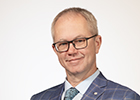Mass labor immigration
Session: 15th Estonian Parliament, third sitting, information briefing
Date: 2024-04-10 15:45
Participating Politicians:
Total Speeches: 14
Membership: 15
Agenda Duration: 12m
AI Summaries: 14/14 Speeches (100.0%)
Analysis: Structured Analysis
Politicians Speaking Time
Politicians
Analysis
Summary
The fourth question concerned the plan of Tiit Riisalo, the Minister of Economic Affairs and Information Technology, regarding population problems and alleviating labor shortages. The discussion centered on the role of controlled immigration in satisfying the economy's needs and labor demands, and how to balance this so that it does not create social or security problems. Riisalo introduced a proposal to change the utilization of the variable component of the quota limit, based on OSKA forecasts, the share of exports, and the salary level of the field of activity. He also shared the planned distribution of the variable component across 11 specializations, with the largest share allocated to the manufacturing industry. The central message was that the goal is to secure the necessary workforce for industrial sectors while maintaining the national wage agreement and employment stability.
In the second part, questions arose regarding the limits of exceptions and their actual implementation: whether and to what extent exceptions might allow the entry of top specialists, researchers, lecturers, and ICT professionals, and how this affects the 0.1% variable component quota limit. The underlying philosophy of the discussion was that mass immigration is neither desired nor the goal, and that quotas and exceptions must depend on the actual needs of the economy and cooperation with other ministries. Finally, it was emphasized that the discussion will continue, and, if necessary, more detailed numerical analyses and plans for various stable mechanisms will be presented.
Decisions Made 1
No decisions will be made during this session. The discussion will continue, and Minister Riisalo and the concerned ministries will proceed with collaborative work to refine the OSKA forecasts, wage comparisons, and the system of exceptions, as well as cooperation with the education sector regarding the initially drafted criteria for SIS admissions. The aforementioned data and analyses will be presented during subsequent discussions, where the guidelines and the alignment of state-funded training needs with the needs of the economy will be specified.
Most Active Speaker
Standing out as the most active participant was Tõnis Lukas (I1YVn0lsltI), a member of parliament and a representative of the right-wing Isamaa party. His high level of speaking activity and the proportion of questions he posed indicated a strong need for participation and control in the discussion, which is typical of right-wing representation platforms.
Aseesimees Toomas Kivimägi
AI Summary
The fourth question is addressed to the Minister of Economic Affairs and Information Technology, Tiit Riisalo, and it will be asked by our good colleague, Tõnis Lukas.

Tõnis Lukas
Profiling Isamaa fraktsioonAI Summary
Tõnis Lukas is criticizing the government’s plan to increase the immigration quota to ease labor shortages. He notes that 13 exceptions effectively allow the quota to be circumvented, and crucially, these exceptions do not apply to IT, startup, or growth companies. Furthermore, given that the salaries for electronics engineers are already above the average, the quota-based solution may not actually resolve the underlying issue.
Aseesimees Toomas Kivimägi
AI Summary
Deputy Speaker Toomas Kivimägi thanks the listeners.

Tõnis Lukas
Profiling Isamaa fraktsioonAI Summary
Tõnis Lukas asks whether there should be even more cheap labor coming here than there is now.
Majandus- ja infotehnoloogiaminister Tiit Riisalo
AI Summary
Riisalo stated that the distribution plan for the variable component—which is based on OSKA forecasts, the share of exports, and the wage situation—is derived from 11 specific fields. This distribution is allocated based on labor shortages, where the metal industry accounts for 30–40%. The remainder—the manufacturing of electronic and electrical equipment, the manufacturing of machinery and equipment, and energy and the repair of energy equipment—each receives approximately 10%. Furthermore, mining, paper production, the chemical industry, the production of construction materials, and motor vehicle production collectively account for 5%, meaning that 95% of the variable component is directed to the manufacturing sector.
Aseesimees Toomas Kivimägi
AI Summary
Deputy Chairman Toomas Kivimägi asked Tõnis Lukas for a clarifying question.

Tõnis Lukas
Profiling Isamaa fraktsioonAI Summary
He warns of the dangers associated with mass immigration, including security concerns, and stresses the necessity of raising wages and engaging the local workforce to prevent the import of cheap labor and avoid exceeding quotas.
Aseesimees Toomas Kivimägi
AI Summary
Toomas Kivimägi thanks the listeners.

Tõnis Lukas
Profiling Isamaa fraktsioonAI Summary
Tõnis Lukas talked about the creation of mass immigration.
Majandus- ja infotehnoloogiaminister Tiit Riisalo
AI Summary
The Minister of Economic Affairs and Information Technology, Tiit Riisalo, confirmed that they are not planning to import massive amounts of labor, and the quotas will remain small and temporary. The objective is to maintain wage levels and help the economy respond by offering exceptions for highly qualified workers and cooperating with the Ministry of the Interior and the Ministry of Education to review training programs, so that eventually Estonian companies will not require external labor.
Aseesimees Toomas Kivimägi
AI Summary
Toomas Kivimägi thanks [the floor/chair] and asks to pose an additional question to Mart Maastik.

Mart Maastik
Profiling Fraktsiooni mittekuuluvad Riigikogu liikmedAI Summary
The public sphere is questioning why the 0.1% quota should be increased to bring in low-wage workers from third countries, especially when the labor market is already open to the EU and the USA, and Estonia currently has around 100,000 refugees and 56,000 unemployed people. Furthermore, it does not believe that a salary of 1,500 euros would attract top specialists here, and therefore demands precise answers regarding who these specialists would be and whom they would be replacing.
Majandus- ja infotehnoloogiaminister Tiit Riisalo
AI Summary
Riisalo said that the need can be addressed to a certain extent through exceptions for highly educated specialists, but Estonian industry cannot afford to pay the salaries of both top specialists and operators of complex machinery at the current wage level. He therefore called on professional associations to compile a precise list of those specialists whom the current system prevents from being brought here, and detail their contribution to the Estonian economy.
Aseesimees Toomas Kivimägi
AI Summary
Toomas Kivimägi thanked Minister Tiit Riisalo, apologized for cutting 30 seconds short the time allotted for the answer to the second question, explained that he thought the Minister had finished speaking, and promised to be more careful next time and conclude the discussion of that specific question.